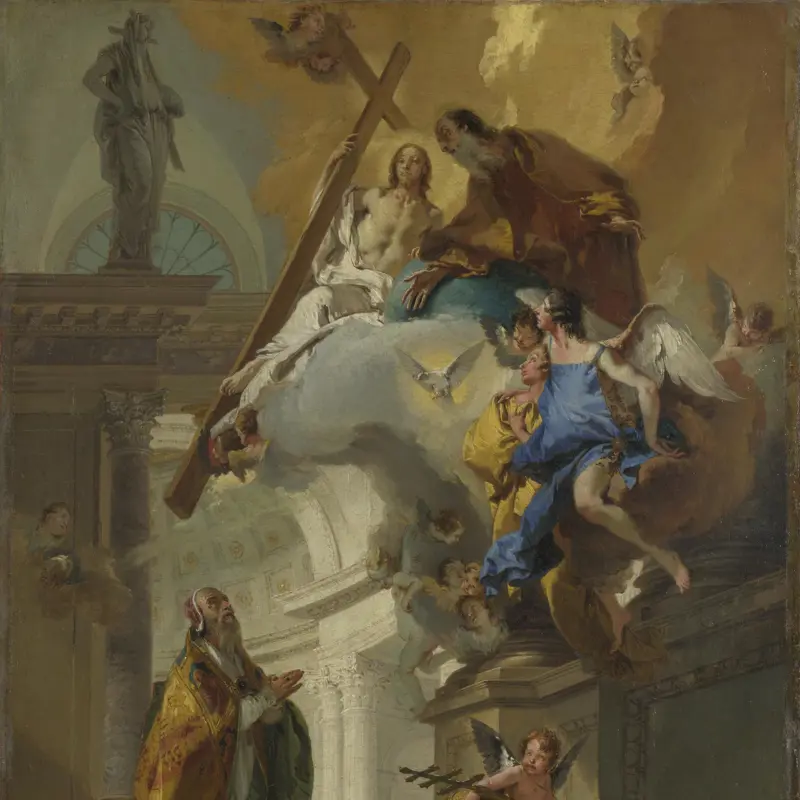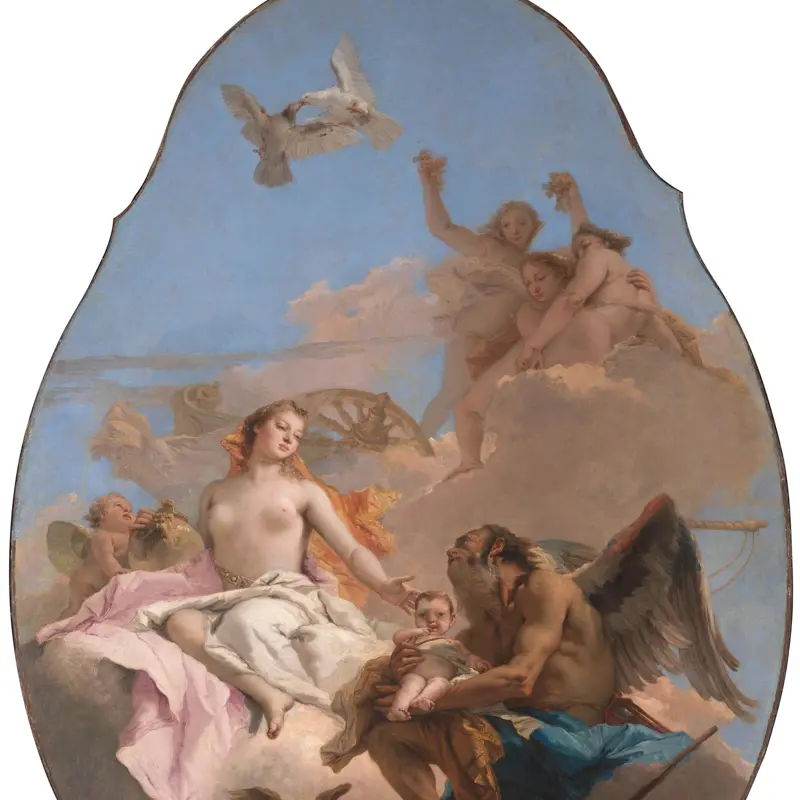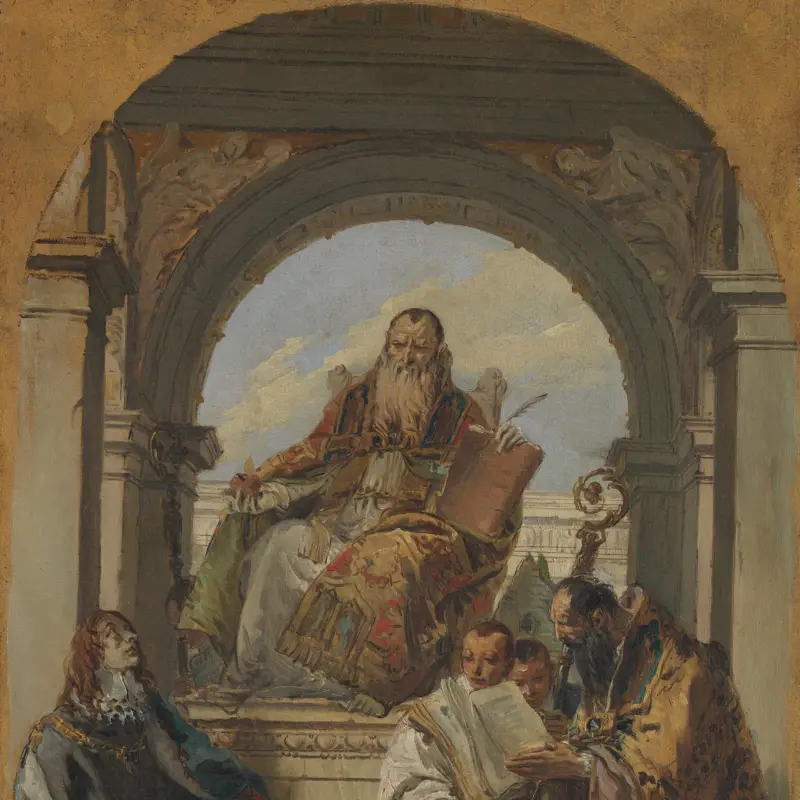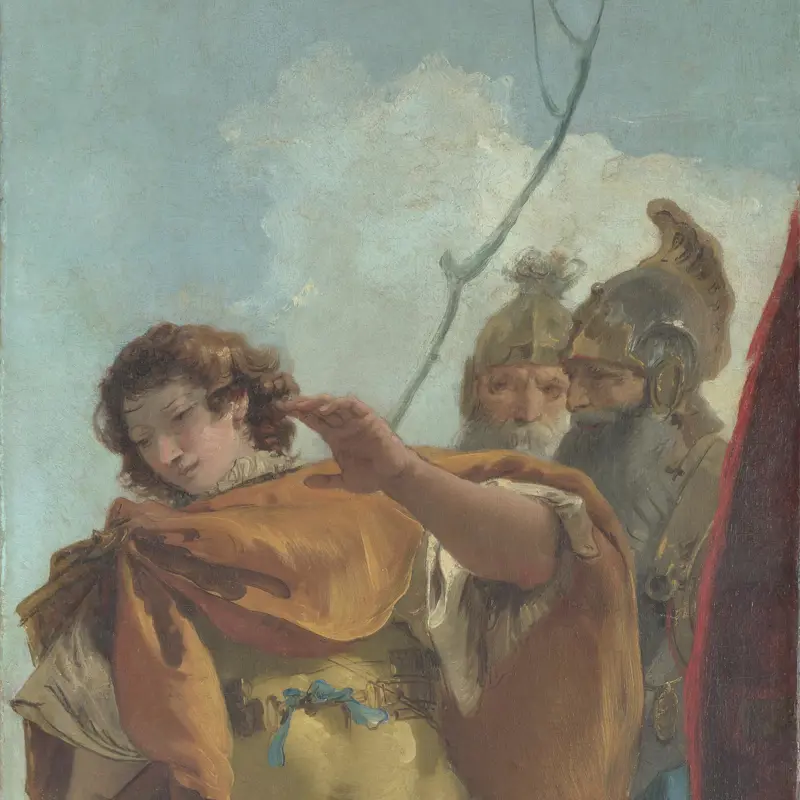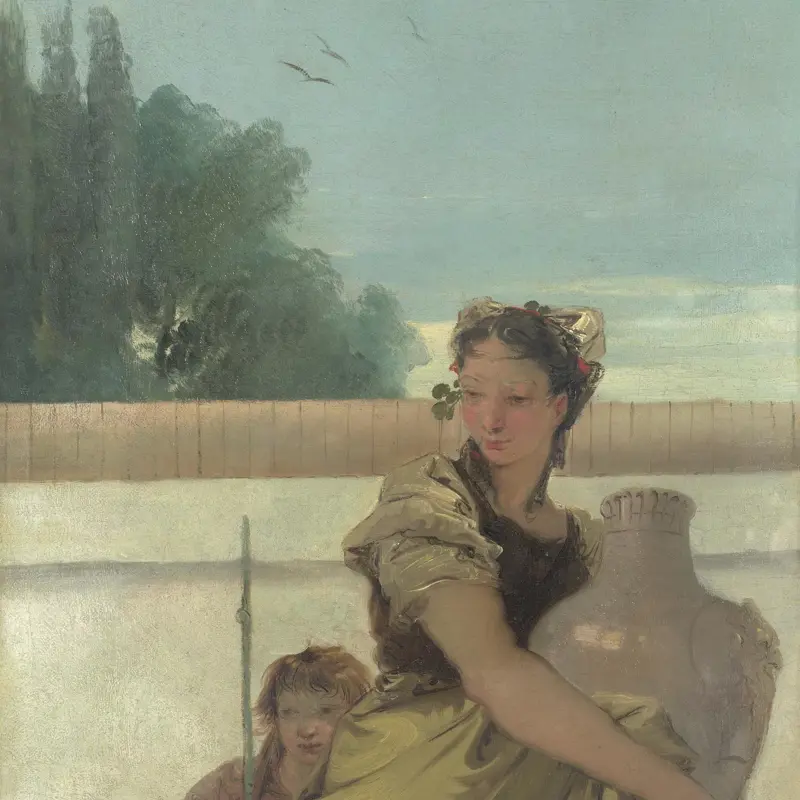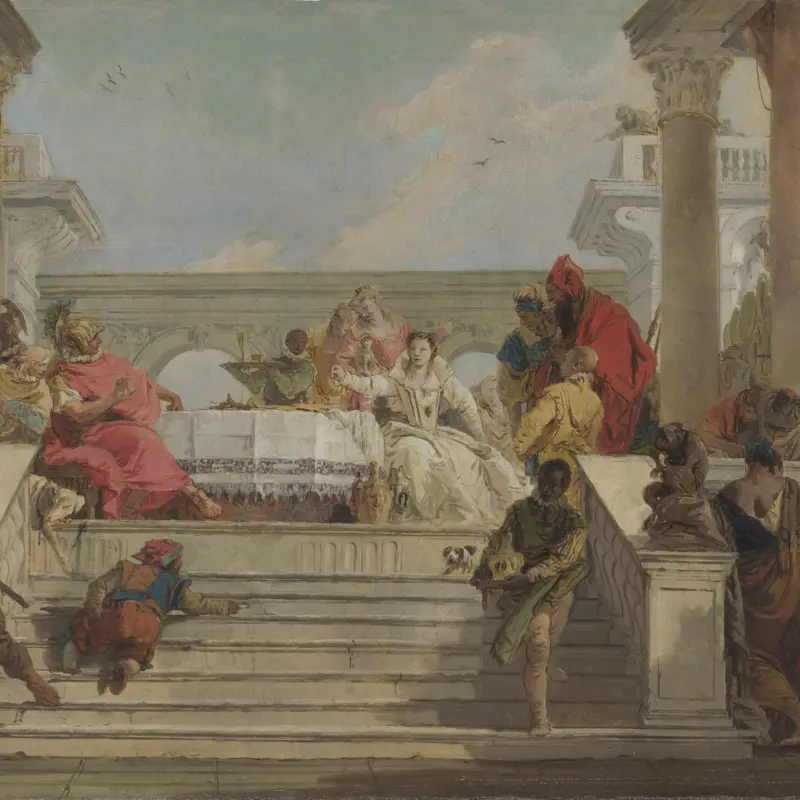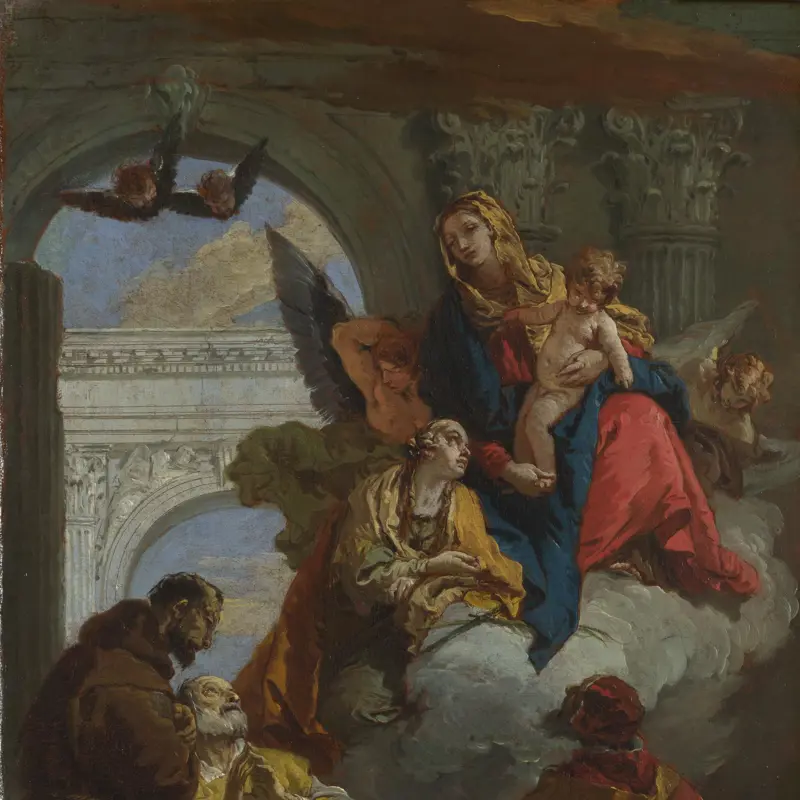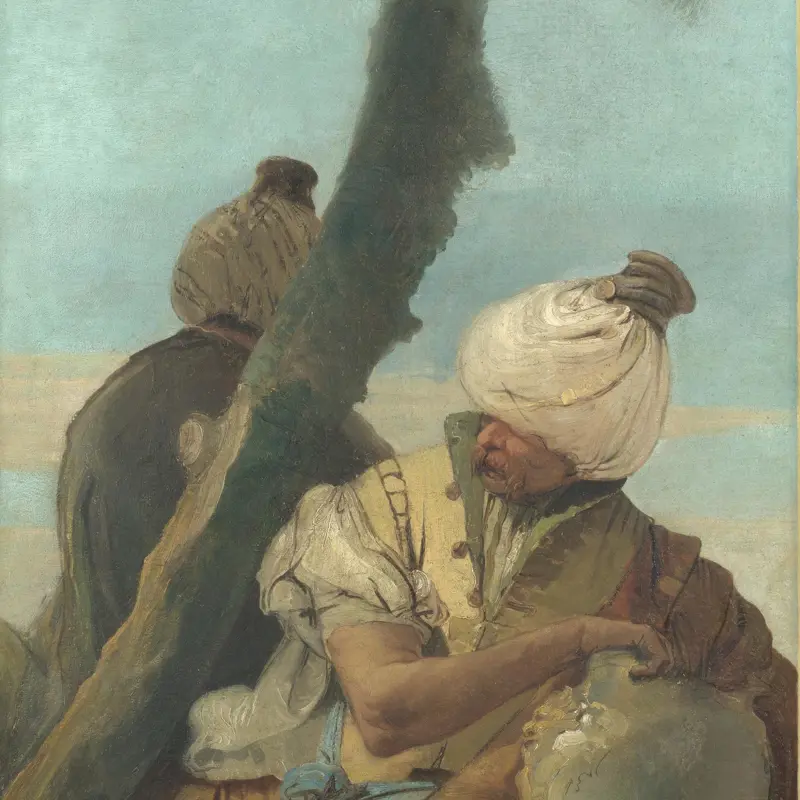Giovanni Battista Tiepolo, 'Saints Maximus and Oswald (?)', about 1745
About the work
Overview
This small picture is based on an altarpiece Tiepolo made in about 1742 for a church in Padua. The altarpiece, which is still in situ, is dedicated to Saints Maximus and Oswald, though only the figure of Saint Maximus is the same in both.
Saint Maximus, the second bishop of Padua, is shown here draped in an exquisite embroidered robe and with his fingertips gently pressed together. Saint Oswald, in gleaming armour, was King of Northumbria in England; he died fighting the pagan ruler of neighbouring Mercia.
A young man with a palm branch tucked into his clothing – a reference to eternal life – kneels beside Maximus and glances towards the cherubs descending from the ceiling of the loggia (open-sided gallery or room). The architecture draws our eye towards the carefully arranged group of figures set against a bright and airy background.
Key facts
Details
- Full title
- Saints Maximus and Oswald (?)
- Artist
- Giovanni Battista Tiepolo
- Artist dates
- 1696 - 1770
- Date made
- about 1745
- Medium and support
- oil on canvas
- Dimensions
- 58.4 × 32.4 cm
- Acquisition credit
- Bought, 1885
- Inventory number
- NG1192
- Location
- Not on display
- Collection
- Main Collection
- Previous owners
Provenance
Additional information
Text extracted from the ‘Provenance’ section of the catalogue entry in Michael Levey, ‘National Gallery Catalogues: The Seventeenth and Eighteenth Century Italian Schools’, London 1986; for further information, see the full catalogue entry.
Bibliography
-
1956Levey, Michael, National Gallery Catalogues: The Eighteenth Century Italian Schools, London 1956
-
1986Levey, Michael, National Gallery Catalogues: The Seventeenth and Eighteenth Century Italian Schools, London 1986
-
2001
C. Baker and T. Henry, The National Gallery: Complete Illustrated Catalogue, London 2001
About this record
If you know more about this work or have spotted an error, please contact us. Please note that exhibition histories are listed from 2009 onwards. Bibliographies may not be complete; more comprehensive information is available in the National Gallery Library.

